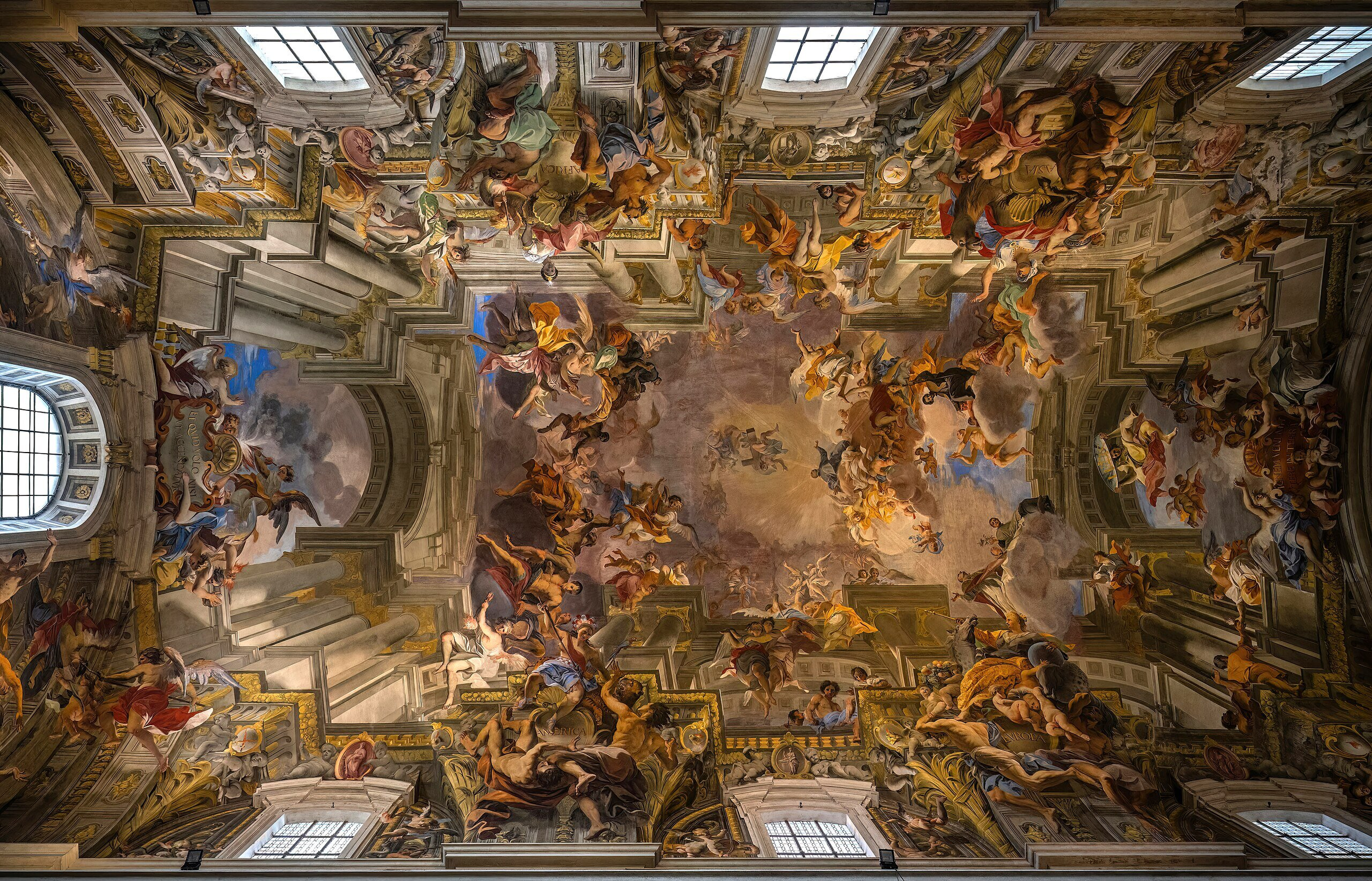The Church of Saint Ignatius in Rome, known as San Ignazio, has recently captured the imagination of tourists and Instagram enthusiasts alike. Visitors are queuing outside its doors, eager to snap a selfie using a strategically placed mirror that reflects the church’s awe-inspiring painted ceiling. But beyond its newfound fame as a social media hotspot lies a fascinating tale of artistic brilliance and historical ingenuity.
The Masterpiece of Andrea Pozzo
At the heart of this spectacle is the extraordinary ceiling painted by Andrea Pozzo between 1688 and 1694. In the central scene, Saint Ignatius of Loyola (1491–1556), the founder of the Jesuit order, ascends through the clouds into heaven. A radiant divine light envelops him and extends outward to symbolize the Jesuit order’s missionary work across the four continents of the known world at the time.
What makes this painting truly remarkable is the optical illusion Pozzo achieved, transforming the church’s ceiling into a breathtaking masterpiece that seems to defy the laws of architecture. This ingenious use of perspective is a key reason why it has become such a popular Instagram backdrop.
The Illusion of Endless Heights
Gazing up at Pozzo’s work, one could be forgiven for believing that the nave’s actual architecture stretches upward to an impossible height. The ceiling appears to dissolve, replaced by a vision of angels, saints, and architectural elements that seem to merge seamlessly with the physical structure.
Delicate details heighten the illusion: angels dangle their legs from clouds, saints cast their gaze either downward to earth or upward toward heaven, and cherubic putti peek out from beneath flowing robes while holding symbolic objects. Even animals emerge from behind what appear to be three-dimensional structures. The effect is so convincing that even a critical eye struggles to discern where reality ends and illusion begins.
The Art of Illusionistic Painting
Andrea Pozzo’s ceiling represents a pivotal moment in the evolution of illusionistic painting in Europe. Since the 15th century, artists and architects had explored techniques like linear perspective to depict three-dimensional space on flat surfaces. One of the earliest documented exercises in this technique appears in a 15th-century treatise by architect Leon Battista Alberti, where lines converging at a single point create the illusion of depth.
Pozzo was a master of this art. He even authored a book titled Rules and Examples of Perspective, which detailed his methods for crafting such illusions. For the ceiling of Saint Ignatius, Pozzo employed a meticulous process. He began by sketching his design on paper, dividing it into a grid of squares. This grid was then projected onto the curved ceiling with the help of strings attached to the cornice, creating a framework for transferring the design.
The Viewing Point and the Magic of Perspective
The central viewing point, located on the church floor where the selfie mirror now stands, was essential to the illusion’s success. From this spot, the viewer perceives the painting as a cohesive, three-dimensional scene. Up close, however, the figures and architectural elements reveal themselves to be distorted and elongated, stretched to accommodate the curved surface of the ceiling. This distortion vanishes when viewed from the intended vantage point, creating the seamless illusion that has mesmerized audiences for centuries.
Why This Illusion Matters Today
While the mirror selfie phenomenon may seem like a modern twist, it’s a testament to the enduring appeal of Pozzo’s artistry. His ingenious use of perspective, combined with the grandeur of his subject matter, continues to inspire awe and curiosity. The story behind the Church of Saint Ignatius’ ceiling is not just a tale of artistic skill but also a reminder of how creativity and innovation can transcend time, captivating audiences in new and unexpected ways.
So, next time you find yourself in Rome, make your way to San Ignazio. Look up, and let yourself be transported by the brilliance of Andrea Pozzo—a master of illusion whose work continues to bridge the gap between the divine and the earthly, one awe-struck gaze at a time.







